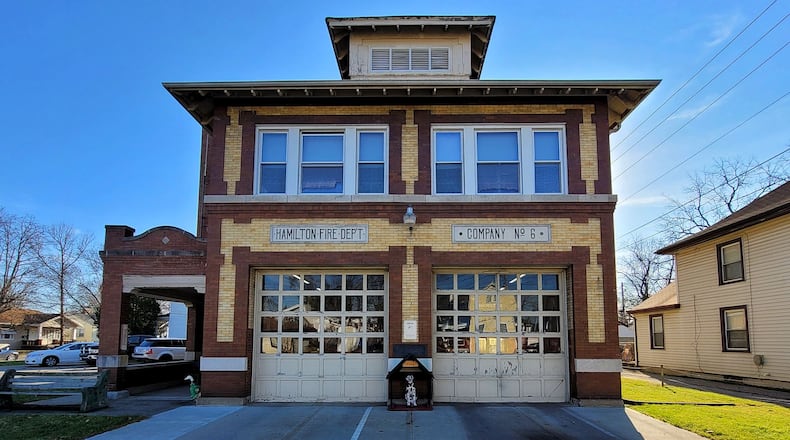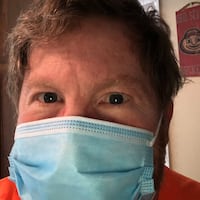Frank Downie, leader of PROTOCOL (People Reaching Out To Others; Celebrate Our Lindenwald), said most neighborhood residents weren’t pleased with the possible site.
“We’re not pleased with it, but we understand their argument,” he said.
Troy Schwable, a retired former Kettering firefighter who lives in Lindenwald, was disappointed with the decision to place the fire station on Erie Boulevard because it moves it away from the neighborhood.
Schwable said he is friends with Fire Chief Mark Mercer and Deputy Chief Tom Eickelberger, but, “I think their hands are tied.”
“We don’t need to move a fire station, we need to build a new one” for Lindenwald, Schwable said. “And we need to build a couple extra fire stations and we need to put some more firefighters on the streets and in the trucks.”
Schwable, who with his wife Kathy in 2018 was named Hamilton’s volunteers of the year, said he realizes Hamilton still is trying to recover from the Great Recession, “and we are making strides to that, but I am adamant that I believe this view is not a positive one.”
“If my math is correct, if they move that fire station out onto Route 4, I’ll give you an example and albeit it is an extreme one, the closest fire station to Linden Elementary will then be Fairfield Station 31,” Schwable said.
One solution that would allow better service to that part of Lindenwald would be to use an “Automatic Mutual Aid Response” system that would automatically dispatch Fairfield firefighters to that area because they are closer, Schwable said.
“Our enemy — fire and illness — it does not care who you are,” he said. “It doesn’t care if you’re rich, it doesn’t care if you’re poor. It doesn’t care if it was an accident, it doesn’t care if it was intentional.”
“Our job as firefighters and paramedics is always simply to get there and render aid, no matter who your victim is, no matter what location or jurisdiction you’re in,” he said.
Schwable would like to see businesses and residents approve a tax levy to improve fire service to make up for fire services that were cut about a decade ago. City officials have not spoken publicly about such a levy.
Basis for a decision
“We looked at the overall call volume everywhere in that area, and we used the Geographical Information Systems, it’s basically how we can analyze response times, where calls are, where fires are, where EMS (emergency medical services) calls are,” Mercer said. “We can plot where the best location is.”
“What we do is use the city of Hamilton’s actual calls to determine where the need is, and then we use mapping to determine response times,” he said. Five years of emergency calls were used, with the most recent three years weighted more heavily.
“We looked at basically every factor that we could that says where do our fire trucks need to be, where do our ambulances need to be, and where are calls for service?” Mercer said, with analysis of when the first- and second companies of firefighters would be expected to arrive.
As with the December 2015 arson fire that killed firefighter Patrick Wolterman, “when you have that second company in, they can really make a big difference on the fire attack, and things like that,” Mercer said.
“We had a range of areas that would be best, but everything was east of the railroad tracks in a range from Bobmeyer (Road) to Grand (Boulevard), so we picked kind-of a median point in there,” Mercer said. “We picked a spot where we felt like we could make an improvement to the bulk of the runs.”
“Obviously, some people are going to benefit more,” Mercer said. “The response times for some are going to be a little bit longer, and some are going to be a little bit shorter, but the vast majority, the best service put us right in that area.”
Compared with the existing station on Laurel Avenue, emergency response time will improve with the new station location, Mercer said.
Better served will be areas east of the CSX tracks, he said.
Improved East Side service, lessened Lindenwald help
Schwable said he knows that Hamilton’s fire Station 25, at 335 N. Erie Blvd., “is getting absolutely shelled with calls, I mean they are just besieged with the amount of calls they have to cover up on the far east end and the north end where they’re at, and on Route 4, because they simply are the closest company.”
“I feel for those guys,” Schwable said. “I know that is not a lot of fun.”
He also understands Station 26, at 651 Laurel Ave., is well past its usefulness.
“We lost a fire house a decade ago, and not only do we need that fire house back, we need a couple more,” he contends. “We need one by the airport to support the businesses we have out there. We need another one on the west side, to support the number of residences and businesses over there.”
Schwable is frustrated “it’s going to take longer for them to get to me now,” once a new station is built.
In a perfect world, “we would have added fire stations,” Mercer said. “But you have to work within the budget and work with what’s available, and what personnel you can expect to have.”
Downie said the people who should be most frustrated are those living on the East Side, whose services were harmed by cuts caused by the Great Recession.
Downie said Lindenwald people at a recent meeting were intrigued to hear the city may be able to use a system that lets fire trucks know when trains are going to be using the CSX tracks, so they know whether they have to use Grand Boulevard via the South Hamilton Crossing to get over the tracks, or whether they can take a more direct route.
And when they learned the possibility of a four-bay station would put a paramedic unit closer to all of Lindenwald, “our ears perked up,” Downie said.
About the Author

